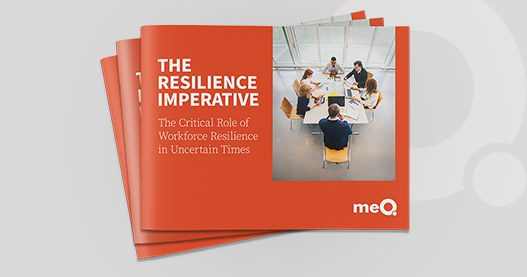It’s certainly not luck. In fact, according to McKinsey the demand for soft skills, and upskilling to improve those skills, had already been predicted prior to the pandemic increase by 26% from 2016 to 2030.
Everyone needs resilience, but too often lack the support, ease of access, or a shared language to make it work across common workforce divides.
Resilience isn’t “a skill” that some people are born having, and others are born without. Resilience can be learned and strengthened in everyone, from the individual contributor to the C-suite. When it’s made accessible and available, embedded into your workforce culture with everyone working towards the same goals, the results are more than impressive. Think of it as the foundation for the success of any workforce development initiative, learning program, or behavioral health strategy.
One customer, working to address behavioral health issues through a transformational culture initiative, saw resilience improvements with an overall average of 20% across several factors, including:
- Ability to Focus: +21.4%
- Managing Anxiety: +24%
- Managing Burnout: +26.1%
- Motivation: +23.1%
How could these outcomes support your work? Your organization needs the dedicated focus to invest in resilience for all and the right partner to get the work done at scale.
According to Deloitte, organizations that made early investments in resilient strategies during the COVID-19 crisis—or, even better, had already made strategic, workforce, and technology investments in capabilities that enhance resilience—outperformed their competition. By looking at our top-performing customers, over 24 months, beginning in December 2018, companies with high resilience outperformed the Dow Jones Industrial Average (DJIA) by 116%.
Advocate for a better approach to resilience
Let us be your guide:
- Build a stronger workforce by anticipating problems before they happen and protecting employee well-being, mental, emotional, and physical.
- Use data and strategic insights to predict your employees’ abilities and inform how you handle crises and rapid change.
- Develop the specific competencies in your people based on their specific resilience needs. Identify at-risk populations, who may need a higher level of support before performance becomes a pressing issue.
Download “The Resilience Imperative: The Science Behind Organizational Resilience” to adapt for the now and prepare for the future with meQuilibrium.

